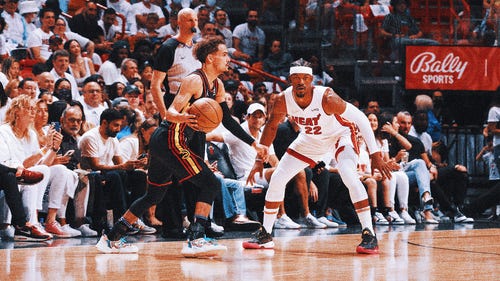
Is the Stifle Tower the X-Factor for the Utah Jazz?

With great athleticism, extraordinary length and impeccable timing, Rudy Gobert has become a beast at the defensive end and the main reason the Utah Jazz have become an elite defensive team.
Since the trade of Enes Kanter at the 2015 All-Star break, Rudy Gobert has turned some heads with his game-changing defense. His emergence has completely changed the direction of the Utah Jazz franchise and he could be the one to make headlines during the upcoming breakout year that fans are anxiously awaiting (and expecting).
He could also be the force that makes the Jazz a legitimate threat to the NBA’s powerhouse teams.
You can’t really understate the impact Gobert has when he’s on the court and what he leaves behind when he’s off the court; Utah went 7-14 in games that Gobert missed with injury. In Gobert’s absence, the team was left with a shallow bench and a defensive shortall.
The stats show how Gobert’s shot blocking impacts the scoreboard; in games that Gobert blocked three or more shots in last season, Utah had a record of 18 wins and six losses.
Feb 6, 2015; Phoenix, AZ, USA; Utah Jazz center Rudy Gobert (27) puts up a layup against the Phoenix Suns during the first half at US Airways Center. Mandatory Credit: Joe Camporeale-USA TODAY Sports
Gobert also has one thing that most dominant big-men in the NBA don’t have — lots of room to improve.
Despite what he brings to the table on the defensive end, the French national was a liability at times offensively. At this stage in his development, Rudy lacks the polish to finish around the rim, and it’s undoubtedly something he would like to work on in training camp.
Gobert averaged 3.4 offensive rebounds per game last season, but it seems the only second-chance points that come from that are on putback dunks. If Rudy can get comfortable enough around the rim to go back up and get fouled, it could be a huge bonus for the Jazz as they look to pronounce their dominance in the frontcourt.
In the modern era of NBA basketball, good floor spacing is critical. Especially when you have elite isolation scorers such as Rodney Hood, Gordon Hayward and Joe Johnson. Derrick Favors is putting in the work with Mehmet Okur to become a deadly mid-range shooter as well. However, despite seeing glimpses of Gobert’s jump shot during the latter portion of last season, it’s likely he will try to develop a post-up game before taking jumpers consistently.
The Stifle Tower isn’t just a shot-blocker, he’s also a ravenous rebounder and will likely lead the Jazz in that department again next season. It is still very important that Gobert gets some help cleaning the glass; the Jazz were 7-2 when Favors had 12-plus rebounds last season.
Seeing Gobert’s NBA 2K17 rating of 81 came as a big surprise to me with Whiteside’s being 85. A piece of advice to Jazz fans would be not to include 2K ratings when evaluating the talent on the roster. After all, Hayward spent most of last season in NBA 2K16 with his ‘strength’ rating lower than Stephen Curry’s. It’s just a joke.
Steph Curry is an incredibly gifted player, don’t get me wrong, but you don’t see him bullying small forwards on the block.
More from Purple and Blues
Gobert is the anchor of the Jazz’s stellar defense and could already be picturing himself in an All-Star jersey or holding the trophy for Defensive Player of the Year. These achievements would be huge for Rudy Gobert individually, but judging by his team-first mentality, I’m sure he would rather be holding up a trophy with the whole team on the last day of the post-season.
The chances of that dream becoming a reality this season are very slim, but Gobert could play a key role in making that happen a few years down the road.
Statistics and information courtesy of ESPN and 2KMTCentral
This article originally appeared on








